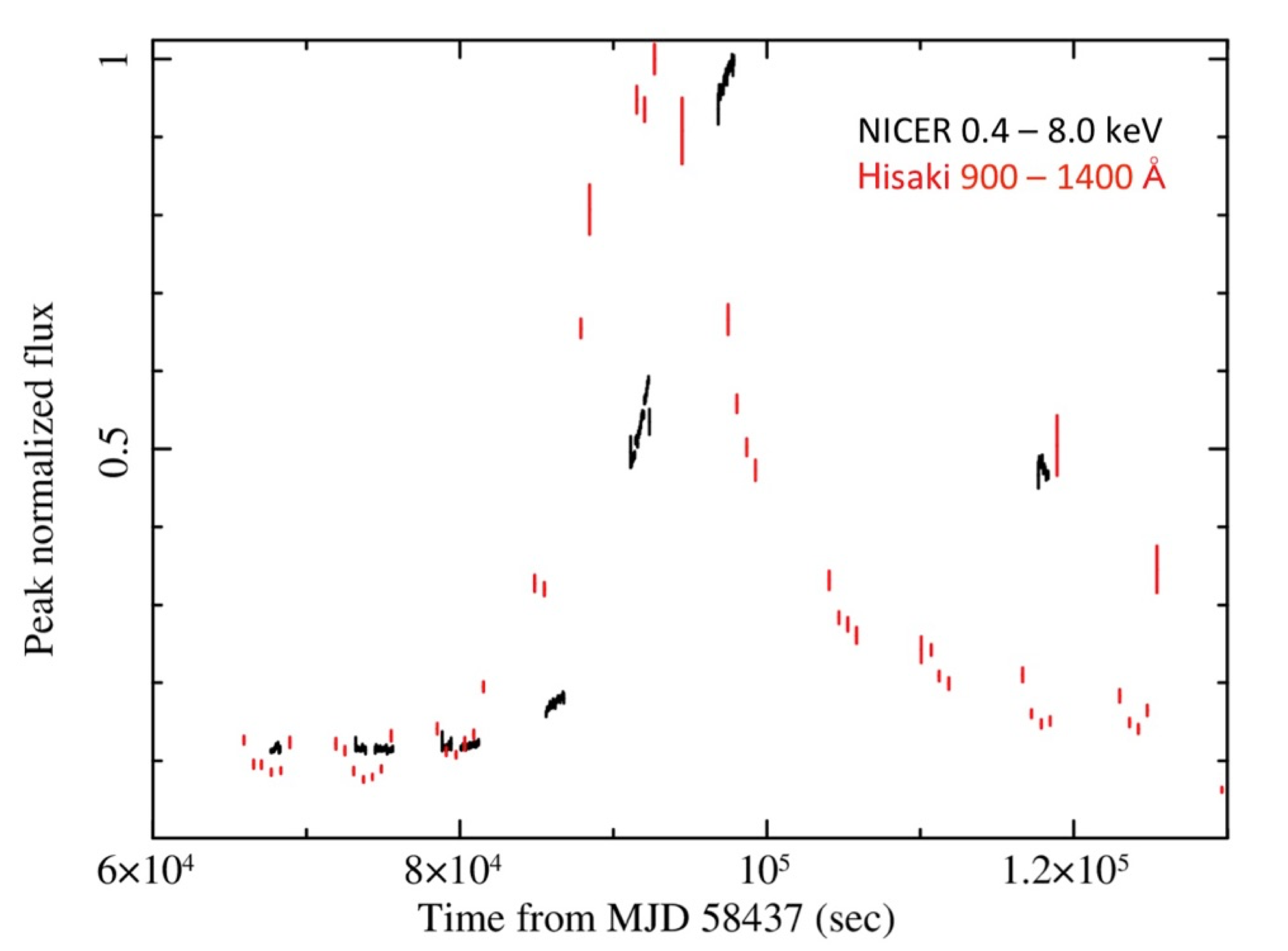NICER / ISS Science Nugget for January 24, 2019Joint observations catch stellar flare from UX Ari from radio to X-raysUX Arietis (UX Ari) contains one of the most active binary star systems of its kind. The stars in these binaries are so close that tidal interactions make them spin rapidly (every 6.4 days, in the case of UX Ari), resulting in increased magnetic activity and producing lots of star spots and stellar flares. This past November, NICER conducted coordinated observations of UX Ari in combination with ground-based radio and optical telescopes, as well as an ultraviolet telescope on board the Japanese spacecraft Hisaki. This was the first coordinated campaign to study an active binary covering such a wide range in electromagnetic wavelengths. During this monitoring campaign, a flare occurred that was detected in X-rays by NICER and in the ultraviolet by Hisaki. Such simultaneous observations of flare stars are extremely rare. In the figure below, the NICER and Hisaki light curves of the flare show that the UV component significantly preceded the X-ray component. This is arguably the best indication yet that the activity driving the UV flaring precedes variations at the higher X-ray energies. This has not been seen before, and will help us to understand how these types of binary stars convert their magnetic energy into powerful eruptions of radiation and mass.
NICER
|



